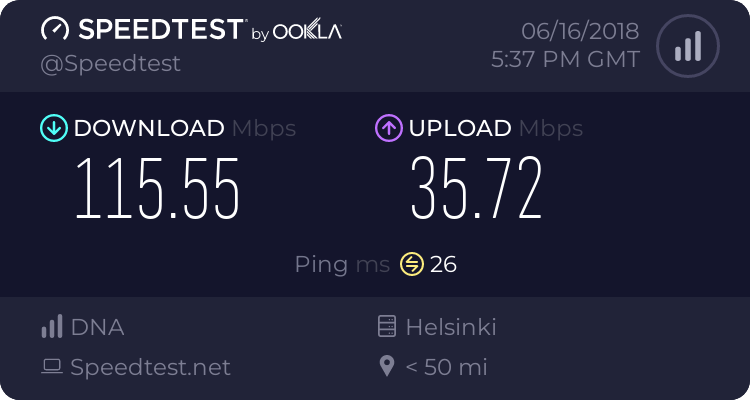What do most people use for their residential broadband (netflix streaming, etc...) - is 4G/5G the primary way most users get online? It seems like a good idea to do it all wirelessly, given the limitations of copper wire and lack of fibre-optic infrastructure.
That is a good question. Despite the fact that the mobile data use has skyrocketed (the average person in Finland used about 20 gigabytes (GB) of mobile data in December 2017, a dramatic rise from the 2016 average of 11 gigabytes per month), the number of fixed-line broadband subscriptions hasn't decreased. However, FTTB subscriptions are up, and, rather unsurprisingly, copper is going away.
The happenstances in rural areas ("Finnish rural" is where more bears than humans are born, just so you know) may be of interest. There is a 99-point-something per cent 4G coverage nowadays. As in "over 99 % of the population lives in areas with 4G coverage". Which is a) true, and b) fantastic. Except that there is a wee caveat when it comes to "Finnish rural" areas (areas outside the tiniest of villages, that is.) It is the frequency used.
In order to save money, only the 800 MHz frequency range is used. That enables larger cell size than 1800 MHz and 2600 MHz frequency ranges used in more urban settings. The caveat? Current max speed is 75 Mb/s (200 Mb/s with added 700 MHz range, using carrier aggregation, in not-so-distant-future. Maybe.) But the most sensible "rural mobile subscription" would thus be a 50 Mb/s connection for a tad under 20 €/month. Or a 100 Mb/s connection for a couple of euros more.
In an unrelated development, the government decided years ago that fast and reliable internet connections are a priority. Even in rural areas. So, 22,000 (and increasing) km of "subsidized" optic cable has been laid. Consumer prizes vary, but
HERE is one (rather typical) example from SE Finland:
Joining fee: 1990 €
100/100 connection 29.90 €/month (+ opening fee 100,-)
1000/100 connection 29.90 €/month (+ opening fee 100,-)
1000/1000 connection 29.90 €/month (+ opening fee 100,-)
More than enough info:
https://www.viestintavirasto.fi/en/statisticsandreports/statistics.html

 .
.